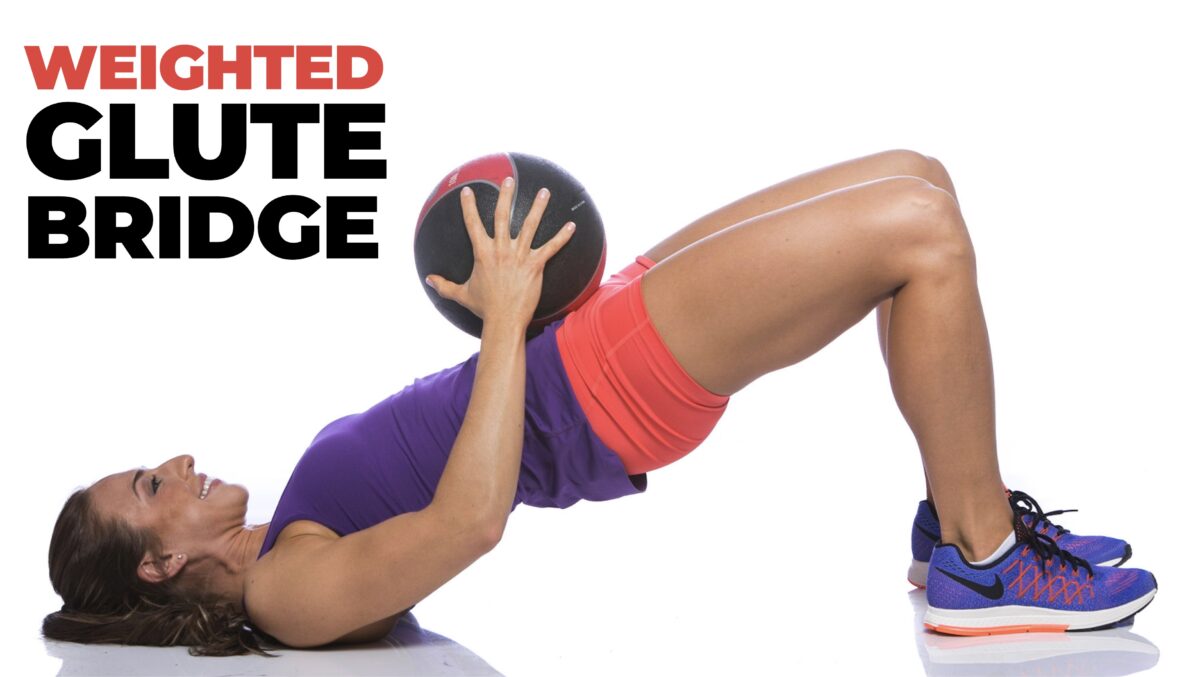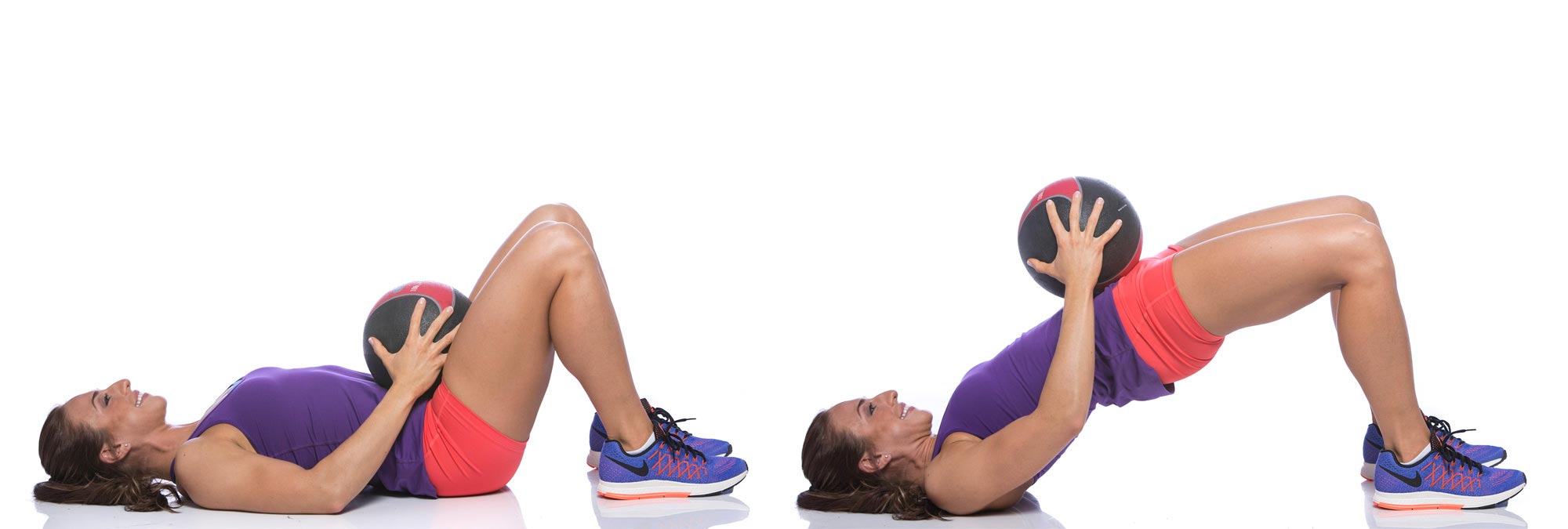
Activate your glutes with this simple at home butt exercise: Weighted Floor Glute Bridge
Unlocking the Power of Weighted Glute Bridges: A Complete Guide
You would be hard pressed to find a complete glute workout routine that does not include the weighted glute bridge. In fact, I consider this to be a must do butt exercise for the women that I work with in my online fitness coaching program because of it’s ability to strengthen and define the lower body. While you can do this move without weight, by adding resistance like a medicine ball or dumbbell, the weighted glute bridge amplifies its effectiveness. My guide will take you through the specifics of how and why to do the weighted glute bridge, allowing women to integrate this simply powerful exercise into their fitness routines with confidence and precision.
Beyond merely being an exercise trend, the weighted glute bridge is a staple because of its impact on muscular strength, endurance, and aesthetic enhancement. I want to be sure you understand both the how’s & why’s so, I am going to hit into the proper execution techniques and understanding the muscle groups it targets. This will allow women to optimize their workouts, achieving not just great strength gains but also noticeable improvements in glute definition. I hope that at the end of this article, you will be able to confidently add the weighted glute bridge to your fitness arsenal.
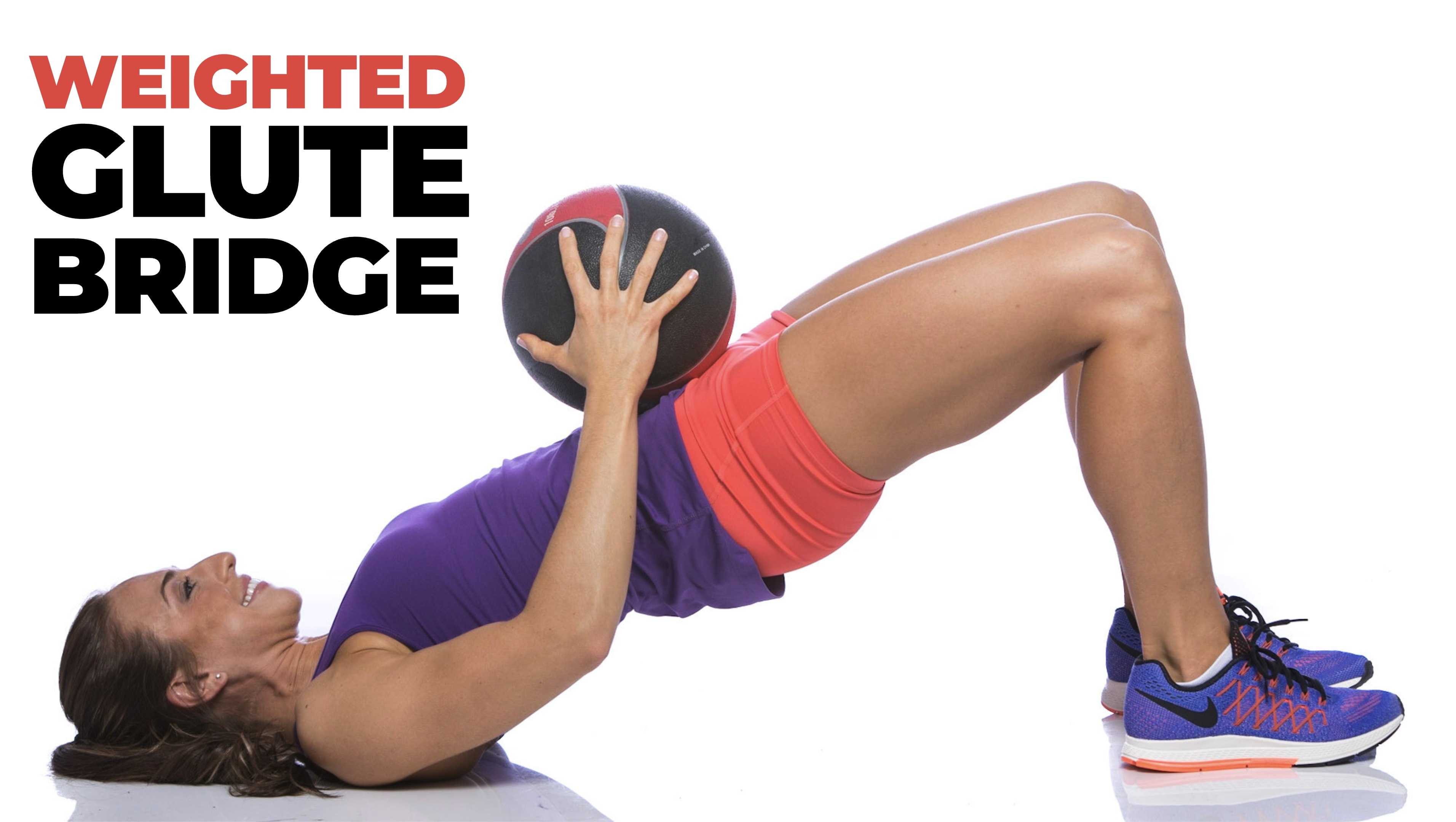
How to Do a Weighted Glute Bridge
The weighted glute bridge is a relatively straightforward exercise, yet its effectiveness lies in the attention to detail. To begin, you’ll need a comfortable surface, like a yoga mat, and a weight. This could be a dumbbell, a medicine ball, or a weighted plate.
- Start Position: Lie on your back with your knees bent and feet flat on the floor, hip-width apart. Place the weight on your lower abdomen or hips, holding it securely with both hands to prevent it from slipping.
- The Lift: Pressing through your heels, elevate your hips towards the ceiling, squeezing your glutes tightly at the top of the movement. Ensure that your body forms a straight line from your shoulders to your knees at the peak of the lift.
- The Descent: Lower your hips back down to the starting position in a controlled manner, maintaining tension in your glutes and core throughout the movement.
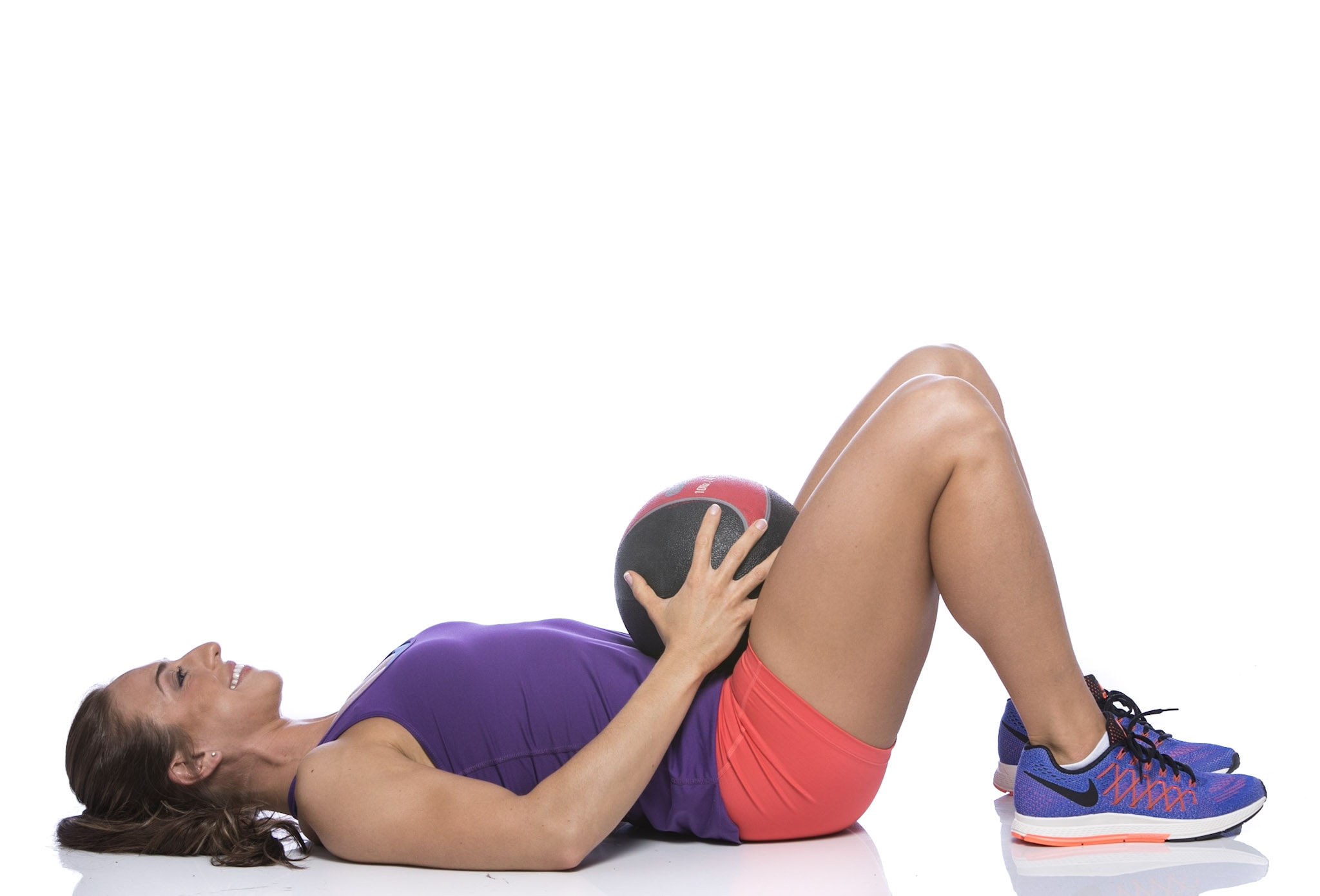
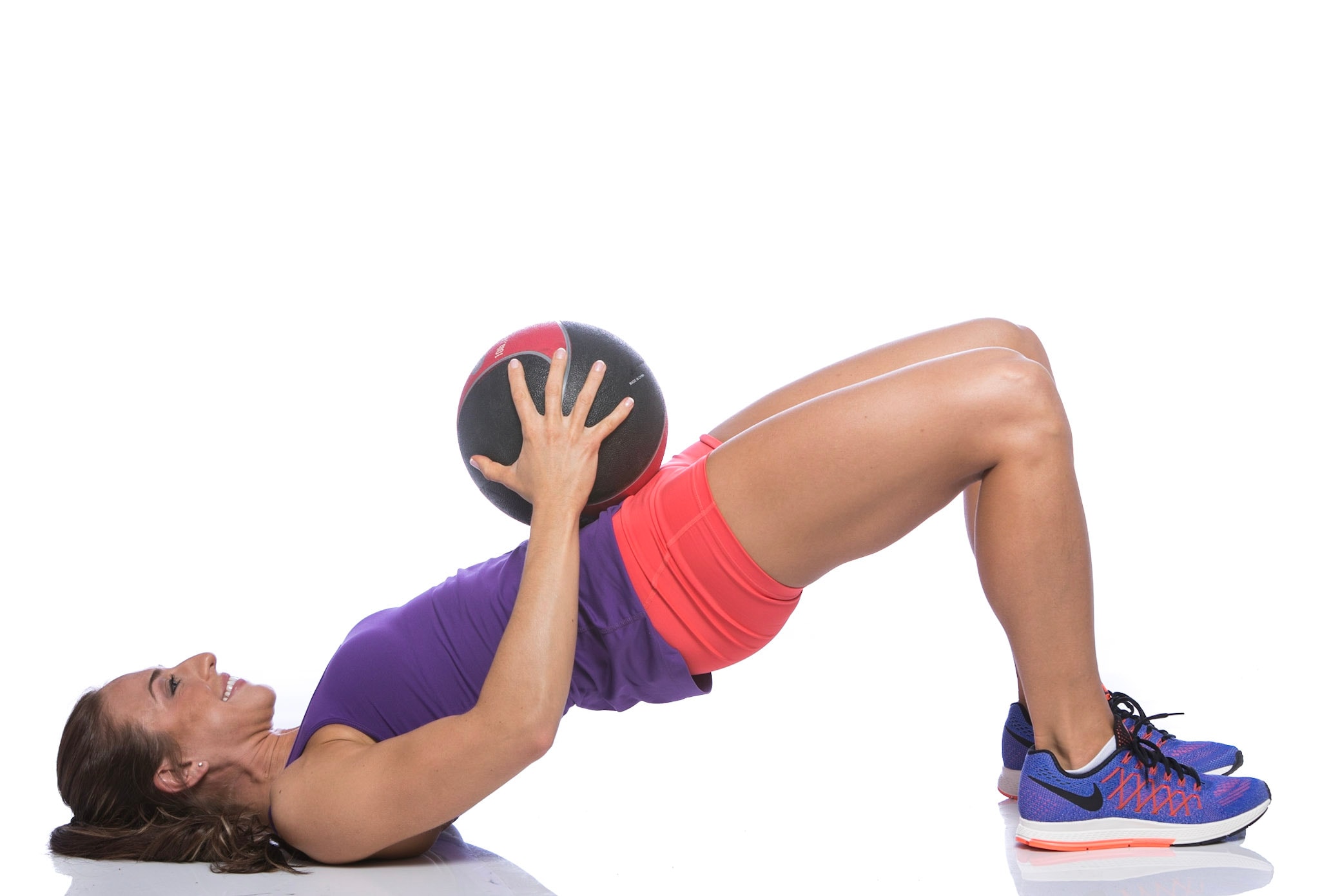
What Muscles Do Glute Bridges Work / What Does a Glute Bridge Work?
The weighted glute bridge primarily targets the gluteus maximus, the largest and most exterior muscle in the buttocks. Additionally, it engages the hamstrings, lower back, and core, offering a comprehensive lower body workout that enhances both strength and stability. By incorporating resistance, the weighted variant intensifies the engagement of these muscle groups, promoting muscular hypertrophy and endurance.
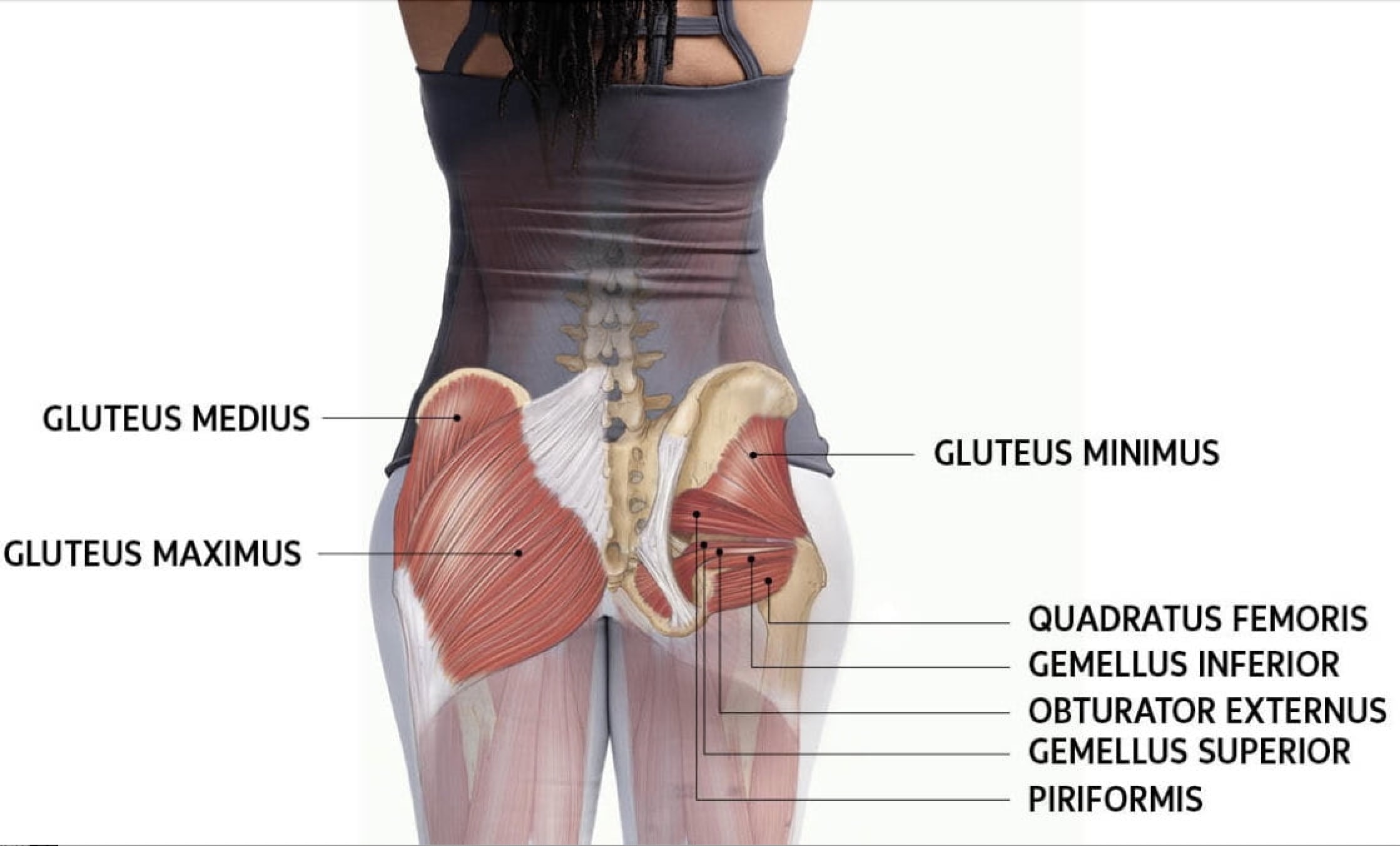
What is the Proper Form for a Glute Bridge with Weight?
Achieving the proper form is crucial for maximizing the benefits of the weighted glute bridge while minimizing the risk of injury. Here are key points to remember:
- Weight Placement: The weight should rest comfortably on the pelvis, secured by your hands. This positioning helps to distribute the resistance evenly, ensuring that the focus remains on your glutes and hamstrings.
- Hip Movement: Drive your hips upwards by engaging your glutes, not your lower back. Avoid overextending at the top to prevent undue stress on your spine.
- Foot Position: Keep your feet flat and pressed firmly into the ground. This foundation is essential for stability and power during the lift.
- Head and Neck Alignment: Maintain a neutral spine by keeping your gaze upwards and your chin slightly tucked, avoiding strain on your neck.
What Will 100 Glute Bridges a Day Do?
Looking for a real challenge? Committing to 100 glute bridges a day can significantly increase muscular endurance and strength in the glutes and hamstrings. This practice may lead to improvements in lower body stability, enhanced performance in other exercises and activities, and potential aesthetic changes due to muscle hypertrophy. However, it’s essential to listen to your body and allow for adequate rest to prevent overtraining and injury.
What Are the Benefits of the Weighted Glute Bridge?
The weighted glute bridge is a dynamic exercise that targets and activates the gluteus maximus, gluteus medius, and hamstring muscles. Here are some of my fav benefits for women that consistently include this glute exercise.
- By adding weight, such as a barbell, dumbbell, or weight plate, atop the hips, the exercise increases resistance, making the muscles work harder and promoting hypertrophy (muscle growth) and strength. This added resistance amplifies the benefits of the traditional glute bridge, making it an effective exercise for those looking to enhance muscle tone and strength. The direct engagement and strengthening of these muscles contribute to improved athletic performance, better support for daily movements, and a more aesthetically pleasing lower body.
- Moreover, the weighted glute bridge plays a crucial role in improving posture and core stability. It does so by strengthening not just the primary muscles targeted but also the surrounding stabilizing muscles, including the core and lower back muscles. This strengthening effect helps in maintaining proper posture and alignment, which is essential for reducing the risk of back pain and other related issues. A strong core and lower back are foundational for overall body strength and health, making this exercise particularly beneficial for individuals who spend long hours sitting or those prone to lower back pain.
- The versatility of the weighted glute bridge lies in its adaptability to various fitness levels and goals. Beginners can start with bodyweight glute bridges and gradually introduce light weights as they build strength. More advanced individuals can increase the weight or experiment with different variations, such as single-leg glute bridges, to challenge their muscles further. This exercise can be easily integrated into different workout routines, whether at home or in the gym, making it accessible to a wide range of individuals.
- Efficiency is another key benefit of the weighted glute bridge. In a single movement, it engages multiple muscle groups, including the glutes, hamstrings, core, and lower back. This multi-muscle engagement offers a high return on investment, as it allows for a comprehensive lower body and core workout within a short amount of time. This efficiency makes it an ideal exercise for those looking to maximize their workout results without spending hours in the gym.
Do Glute Bridges Make Your Bum Look Bigger?
Yes, over time, performing weighted glute bridges can contribute to an increase in glute size, thanks to muscle hypertrophy. This exercise is highly effective in stimulating muscle growth in the gluteal region, leading to a fuller, more lifted appearance. For optimal results, it should be integrated into a balanced fitness routine that includes a variety of exercises and adequate nutrition.
In conclusion, the weighted glute bridge is a dynamic and potent exercise that serves as a valuable addition to any fitness regimen. By understanding and applying the principles outlined in my guide, women can harness their full potential for lean and defined glutes!
Scientific Research
Imoto, Aline Mizusaki, et al. “Quadriceps Strengthening Exercises Are Effective in Improving Pain, Function and Quality of Life in Patients with Osteoarthritis of the Knee.” Acta Ortopedica Brasileira, vol. 20, no. 3, 2012, pp. 174–179, www.ncbi.nlm.nih.gov/pmc/articles/PMC3718434/, https://doi.org/10.1590/S1413-78522012000300008.
Jakobsen, Thomas Linding, et al. “Quadriceps Muscle Activity during Commonly Used Strength Training Exercises Shortly after Total Knee Arthroplasty: Implications for Home-Based Exercise-Selection.” Journal of Experimental Orthopaedics, vol. 6, no. 1, 2 July 2019, https://doi.org/10.1186/s40634-019-0193-5.
Kuo, Yu-Chi, et al. “Twelve-Weeks of Bench-Step Exercise Training Ameliorates Cardiopulmonary Fitness and Mood State in Patients with Schizophrenia: A Pilot Study.” Medicina, vol. 57, no. 2, 7 Feb. 2021, p. 149, https://doi.org/10.3390/medicina57020149. Accessed 14 Mar. 2023.
Mair, Jacqueline L., et al. “Benefits of a Worksite or Home-Based Bench Stepping Intervention for Sedentary Middle-Aged Adults – a Pilot Study.” Clinical Physiology and Functional Imaging, vol. 34, no. 1, 3 June 2013, pp. 10–17, https://doi.org/10.1111/cpf.12056.

